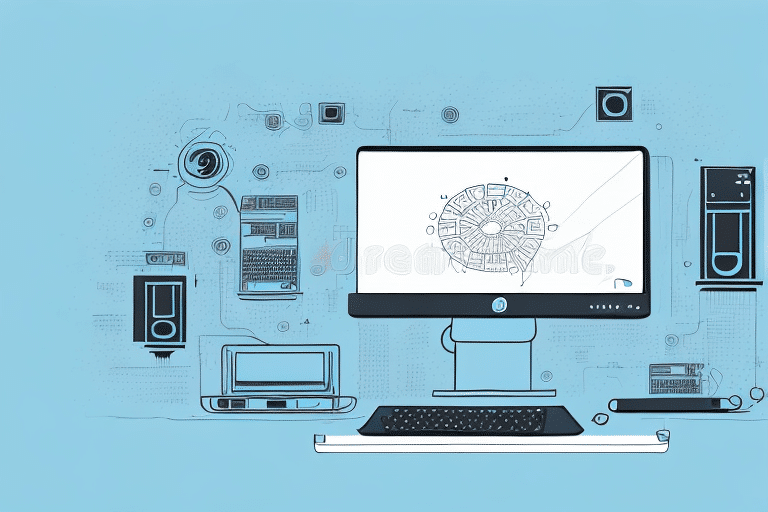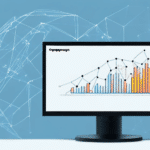Introduction to UPS Integration with Odoo ERP
Odoo ERP systems are pivotal for managing various business processes, including operations, financial management, and customer relationship management. To ensure continuous operations during power outages or fluctuations, integrating a reliable Uninterruptible Power Supply (UPS) is essential. A UPS provides an uninterrupted power source, safeguarding Odoo ERP systems from potential disruptions and data loss.
The Importance of UPS for Odoo ERP Systems
UPS, or Uninterruptible Power Supply, plays a critical role in maintaining the reliability of Odoo ERP systems. By providing a stable and continuous power source, a UPS ensures that business operations remain uninterrupted during power outages or voltage irregularities. According to a report by IEEE, unexpected power interruptions can lead to significant data loss and operational downtime, which can adversely affect business performance.
Additionally, a UPS protects against voltage surges, spikes, and fluctuations that can damage sensitive ERP hardware components. Businesses that rely heavily on their ERP systems cannot afford such interruptions, making UPS integration a non-negotiable aspect of their IT infrastructure.
Selecting and Integrating the Right UPS for Odoo ERP
Choosing the Right UPS
Selecting an appropriate UPS requires careful consideration of several factors:
- Power Capacity: The UPS should have sufficient power capacity to support the Odoo ERP system. It's generally recommended to choose a UPS that offers at least 20-25% more capacity than the system's maximum power requirement.
- Battery Backup Runtime: The battery should provide enough runtime to allow for proper shutdown procedures during extended outages. A typical runtime ranges from 5 to 15 minutes, depending on the UPS model.
- Compatibility: Ensure that the UPS is compatible with the Odoo ERP system's hardware and software requirements. Consulting the UPS manufacturer’s compatibility list can be beneficial.
- Form Factor: Depending on the available space, decide between rack-mounted or standalone UPS units.
For detailed guidelines on selecting the right UPS, refer to resources from Belden and APC by Schneider Electric.
Integrating UPS with Odoo ERP
Integration involves connecting the UPS to the server hosting the Odoo ERP system and configuring software settings to recognize and interact with the UPS. This setup enables the system to automatically switch to UPS power during outages, preventing downtime. Key steps include:
- Connecting the UPS to the server via USB or network cables.
- Installing necessary UPS management software compatible with Odoo ERP.
- Configuring communication protocols to ensure seamless interaction between the UPS and the ERP system.
Regular testing and maintenance are crucial to ensure the UPS operates effectively. This includes routine battery checks and replacing batteries as they age.
Best Practices for Configuring and Optimizing UPS Performance
Configuration Best Practices
Proper configuration maximizes UPS efficiency and longevity. Follow these best practices:
- Set appropriate alert thresholds to receive notifications during power anomalies.
- Schedule regular battery tests to assess health and performance.
- Maintain consistent communication protocols between the UPS and Odoo ERP system.
According to NIST, implementing these configurations can reduce the risk of unexpected downtime by up to 40%.
Optimizing UPS Performance
To ensure optimal performance, consider the following tips:
- Regular Maintenance: Periodically inspect UPS components for wear and tear and replace parts as necessary.
- Environmental Control: Install the UPS in a cool, dry environment to prevent overheating and extend battery life.
- Load Management: Avoid overloading the UPS by distributing power loads evenly across multiple units if necessary.
Step-by-Step Guide to Setting Up UPS with Odoo ERP
Follow this comprehensive guide to integrate UPS with your Odoo ERP system effectively:
- Assemble the UPS: Follow the manufacturer’s instructions to set up the UPS unit.
- Connect to Power Source: Plug the UPS into a stable power outlet and ensure it is switched off before proceeding.
- Connect to Odoo ERP Server: Use appropriate cables (USB or network) to link the UPS to the server.
- Power On the UPS: Turn on the UPS and allow it to initialize.
- Install Management Software: Install UPS management software compatible with your ERP system.
- Configure Settings: Set up communication protocols, alert thresholds, and shutdown procedures within the software.
- Conduct a Test Run: Simulate a power outage to ensure the system switches to UPS power seamlessly.
Ensuring each step is meticulously followed can significantly reduce the risk of integration issues.
Monitoring and Managing UPS with Odoo ERP
Effective Monitoring Strategies
Continuous monitoring is essential to preemptively identify and address potential UPS issues:
- Real-Time Monitoring: Utilize UPS management software to monitor power status, battery health, and load conditions in real-time.
- Performance Metrics: Track key performance indicators such as runtime efficiency and frequency of power events.
- Automated Alerts: Configure the system to send automated alerts for critical events like battery failures or overloads.
Implementing these strategies, as suggested by Data Center Dynamics, can enhance the reliability of both the UPS and Odoo ERP systems.
Managing UPS Operations
Effective management ensures the longevity and reliability of the UPS:
- Schedule regular maintenance checks to inspect and service UPS components.
- Maintain an accurate logbook documenting service history, maintenance activities, and performance metrics.
- Update UPS firmware and software regularly to incorporate the latest features and security patches.
Troubleshooting Common UPS and Odoo ERP Integration Issues
Despite careful setup, issues may arise during UPS and Odoo ERP integration. Common problems include:
- UPS Making Noise: This may be due to failing fans or loose components. Regular inspections can help identify and rectify these issues.
- Frequent System Downtimes: Check for proper configuration and ensure that the UPS capacity matches the system’s power requirements.
- Insufficient Battery Runtime: Batteries degrade over time. Monitor battery health and replace them as needed to maintain expected runtimes.
- Compatibility Issues: Ensure that both the UPS hardware and management software are compatible with the Odoo ERP system.
For in-depth troubleshooting, refer to the UPS manufacturer’s support resources or consult with IT professionals specialized in ERP systems integration.
Benefits of Using UPS with Odoo ERP
Integrating a UPS with Odoo ERP offers numerous advantages:
- Uninterrupted Operations: Maintains system uptime during power outages, ensuring continuous business operations.
- Data Protection: Prevents data loss by allowing for controlled shutdowns and safeguarding against power surges.
- Cost Efficiency: Reduces potential losses associated with system downtimes and data recovery efforts.
Research by Gartner highlights that businesses utilizing UPS systems experience a 30% decrease in downtime-related costs.
Future Trends in UPS and Odoo ERP Integration
The future of UPS and Odoo ERP integration is poised to evolve with advancements in technology:
- Increased Automation: Enhanced automation capabilities will allow for more intelligent power management and predictive maintenance.
- Energy Efficiency: Development of more energy-efficient UPS systems will align with global sustainability goals.
- Advanced Monitoring: Integration with IoT and AI will provide more sophisticated monitoring and analytics, enabling proactive issue resolution.
Continued innovation in UPS technology will further streamline integration processes, making it easier for businesses to maintain reliable ERP operations.
Case Studies: Successful UPS and Odoo ERP Implementations
Several businesses have successfully integrated UPS systems with their Odoo ERP setups, resulting in enhanced performance and reliability:
Data Center in Singapore
A leading data center in Singapore implemented a single-phase online rackmount UPS system with N+1 modular redundancy. This setup ensured that the ERP system remained operational even during power outages, preventing data loss and minimizing downtime.
Silicon Valley Tech Company
A tech company based in Silicon Valley integrated a high-capacity UPS with their Odoo ERP system. This integration provided reliable power backup, allowing the company to maintain seamless operations and data integrity during unexpected power disruptions.
De La Rosa Wine Manufacturer
De La Rosa, a wine products manufacturer, utilized a robust UPS solution to protect their Odoo ERP system. The UPS integration facilitated uninterrupted production processes and safeguarded critical business data, contributing to overall operational efficiency.
These case studies underscore the tangible benefits of UPS integration with Odoo ERP systems across diverse industries.
Conclusion
Integrating a UPS with Odoo ERP systems is a strategic investment for businesses aiming to ensure uninterrupted operations and protect against power-related disruptions. The process involves selecting the right UPS, configuring it appropriately, and maintaining it through regular monitoring and maintenance. By adhering to best practices and leveraging advancements in UPS technology, businesses can enhance the reliability and efficiency of their ERP systems.
The benefits of UPS integration extend beyond mere power backup, encompassing data protection, cost savings, and operational resilience. As technology evolves, future trends such as increased automation and energy efficiency will further optimize UPS and ERP integrations, offering even greater advantages to businesses. Successful implementations across various sectors highlight the critical role of UPS in sustaining robust and reliable ERP operations.






















